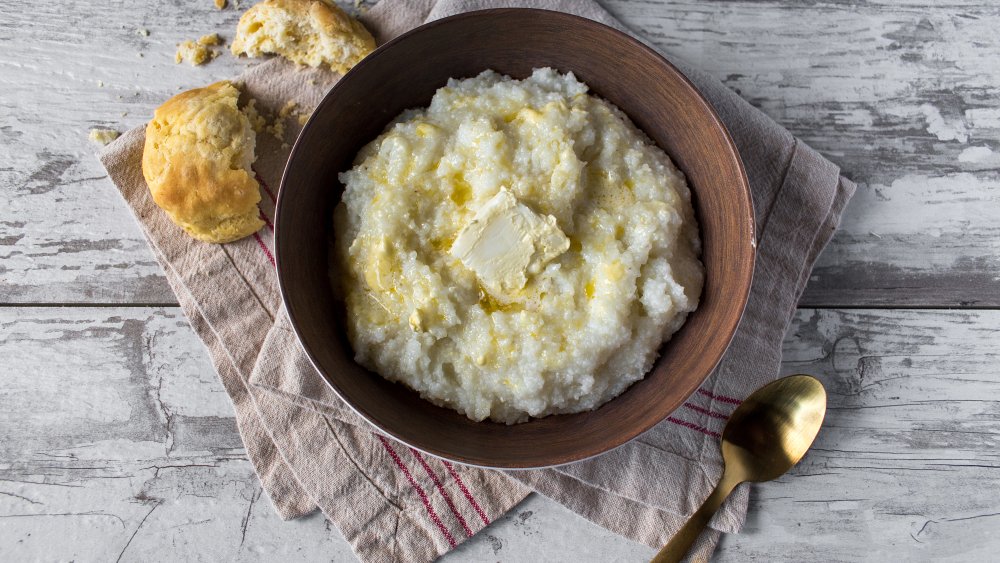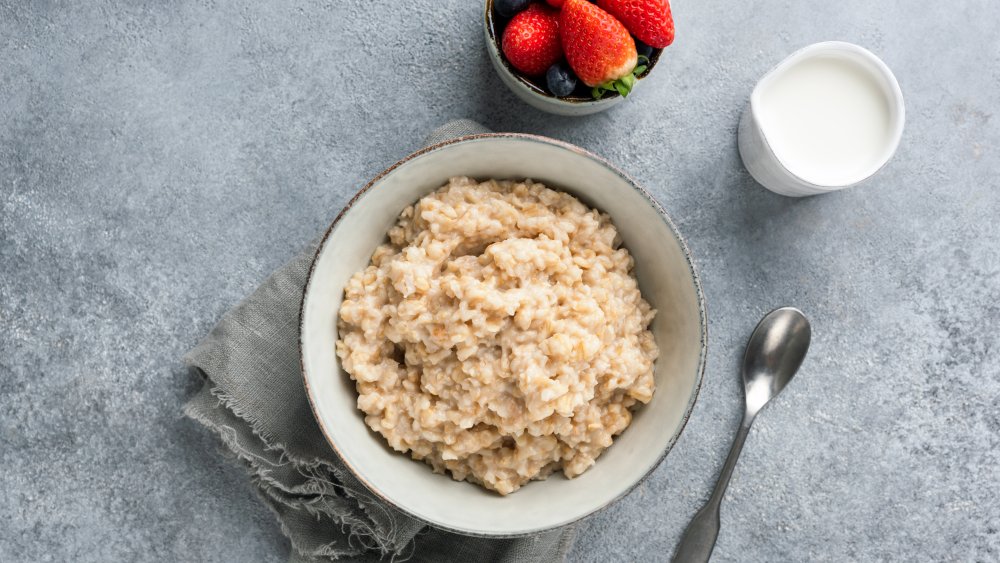Grits Or Oatmeal: Which Is The Healthier Breakfast Option?
Depending on where you grew up, grits or oatmeal might have been a staple of childhood. There's nothing like waking up and smelling the pleasant aroma of breakfast being prepared. However, if you didn't grow up in the south, you may not be familiar with what grits are. According to Southern Living, grits are a delicacy and are considered a classic choice for a meal. But what exactly is in grits?
Grits are made of dried corn and that texture resembles a loose polenta. The dish is commonly prepared with water or milk and you can eat them plain or with all the fixings like salt, butter, sugar, or cheese. Oatmeal on the other hand, is made from harvested oat grain. It's high in fiber and low in calories, making nutritionists very happy. However, oatmeal can get unhealthy as most people enjoy it with spices, milk, sugar, or butter.
How many calories do grits and oatmeal have?
In terms of calories, which we tend to pay the most attention to, a cup of plain cooked grits has 182 calories and plain oatmeal has 166 calories. However, SFGATE recommends if you are trying to lose weight, eating grits can give you a more full feeling without eating a large amount of fat calories, as grits contain just one gram to oatmeal's three. That said, adding sugar, butter, or salt increases those calories significantly. So if you're trying to be healthy, try to keep those additions to a minimum.
In terms of getting a sufficient amount of vitamin B6, both enriched cooked grits and oatmeal are great options. This is good news because according to UCLA Health, B6 deficiency can cause carpal tunnel and other issues. A cup of grits has .46 milligrams, while the same amount of oatmeal has .68 milligrams of B6. However, if folate is your main concern, a cup of grits has more than five times the amount of oatmeal. This is key for women who are expecting because folate reduces the risk or neural tube defects such as spina bifida and anencephaly, according to the CDC.
Ultimately, they are both healthy choices when you eat them plain. Luckily you can choose either for a nutritious diet, depending on which you prefer and what health benefit you're ultimately looking for.

